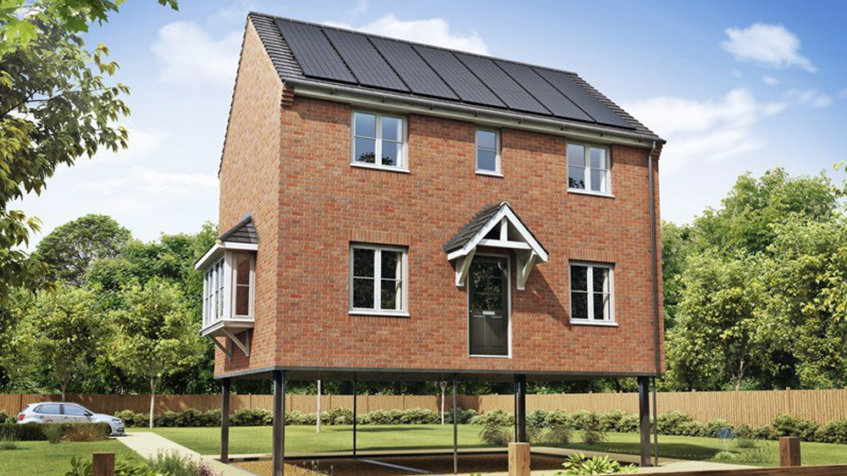Larkfleet wants to build the three-bedroom detached house in Weston Hills, near Spalding, Lincolnshire, to prove the concept.
Work on constructing the house, which will sit on a steel ring beam in place of conventional foundations, could begin early in 2017 if South Holland District Council grants permission. Experiments with raising and lowering the house – including testing long-term maintenance and operation of the jacking system – would then run for up to five years.
Larkfleet says that if tests are successful the house could provide a model that would enable housebuilding on thousands of sites across the UK which at present cannot be developed because of the risk of flooding.
Under the plans, a series of eight mechanical jacks – powered by a central motor, gear box and drive shafts – will raise the 65-tonne house up to 1.5 metres above ground level in less than five minutes.
Because the house will be of modular steel-frame design it can be disassembled and re-erected on another site on conventional foundations as a family residence.
Rooftop solar panels and a battery would provide the house with some continuing electricity supply when raised above the ground and the water and sewage would remain connected through flexible hoses. However, it is not envisaged that residents would remain in occupation during floods. Instead, the householders would pack up, lock up and jack up the home before taking refuge in temporary accommodation on higher ground elsewhere.
Karl Hick, chief executive of The Larkfleet Group of Companies, said: ‘The elevating house effectively eliminates the risk of flood damage to homes so that more land across the country can be approved for future home building. This will help to tackle the ‘housing crisis’ that is being caused by the demand for new housing far exceeding the supply.’
UK and international patents for the ‘elevating house’ are pending.
The company acknowledges that initial costs of the prototype are high but envisages they would come down if the system goes into production. It is possible that if it allows building on lower priced land, blighted by flood risk, the technology could even be cost neutral, it suggests.

































